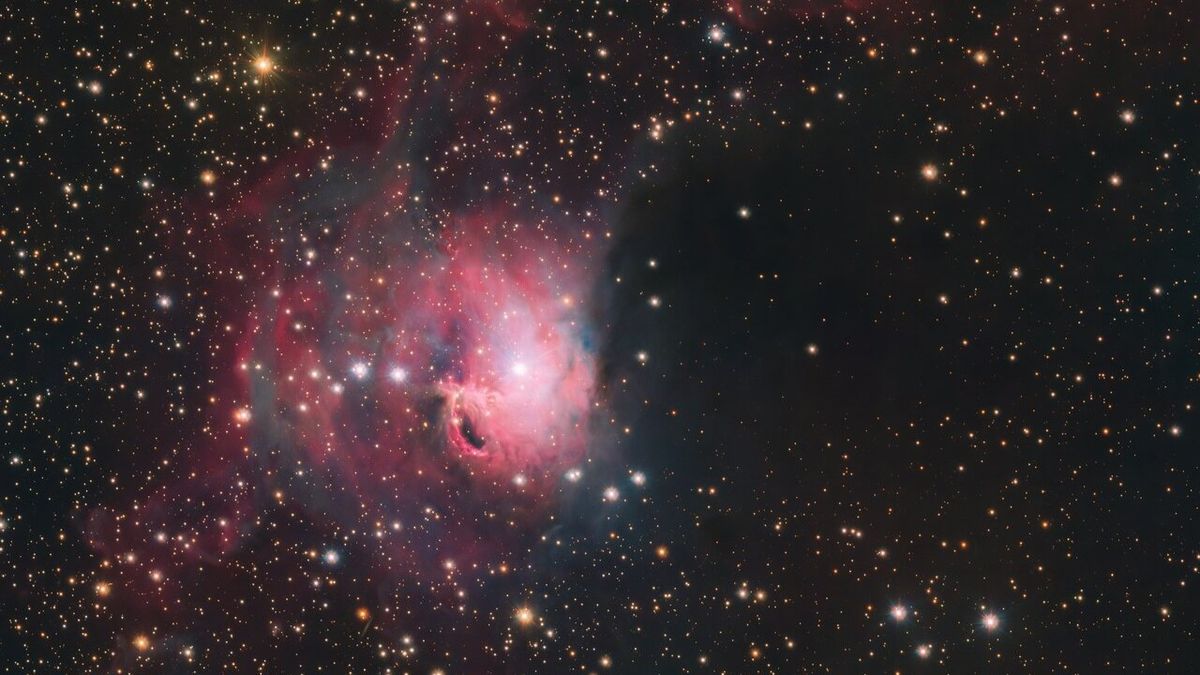A bright pink koi fish has been spotted swimming across the southern sky.
The European Southern Observatory’s (ESO) VLT Survey Telescope (VST) snapped a beautiful new view of the Gum 3 nebula, located about 3,600 light-years from Earth. The nebula — an interstellar cloud of gas and dust that plays a key role in the life cycle of stars — appears to take the shape of a koi fish, varieties of carp that are known for their vibrant colors.
The new image was taken using the OmegaCAM instrument, a giant 268-megapixel camera on the VST, which is located at the Paranal Observatory in the Atacama Desert of northern Chile. The telescope is designed to survey large swaths of the southern sky in visible light and capture stunning images of cosmic objects like Gum 3, according to an ESO statement.
OmegaCAM is equipped with 12 different broadband filters, allowing astronomers to observe emissions from objects like stars and galaxies across a wide wavelength range. Nebulae, which can form from gas and dust remnants of a stellar explosion, called a supernova, or from dense regions of gas and dust, where gravity pulls material together to form new stars, emit light at various wavelengths.
The Gum 3 nebula is believed to be a stellar nursery, lit up by young stars emitting powerful radiation that causes the interstellar gas to glow and form interesting patterns and shapes, which is why the nebula appears to take on the form of a koi fish.
“When the intense ultraviolet radiation from nearby young stars hits hydrogen atoms in the cloud, they emit visible light at very specific colors, which we see as shades of red and pink in the image,” ESO officials said in the statement.
“At the same time, tiny particles of dust within the cloud reflect starlight, especially blue colors, similar to what makes the sky look blue here on Earth,” they added. “This play of colors makes nebulae like this spectacular to look at.”
The new image also captures dark pockets of space, where large clumps of dust block some of the visible light and obscure the stars in that area from the telescope’s view. This can be seen in the lower right of the Gum 3 image, which ESO released online on June 10.











/https://tf-cmsv2-smithsonianmag-media.s3.amazonaws.com/filer_public/34/31/3431771d-41e2-4f97-aed2-c5f1df5295da/gettyimages-1441066266_web.jpg)








Discussion about this post